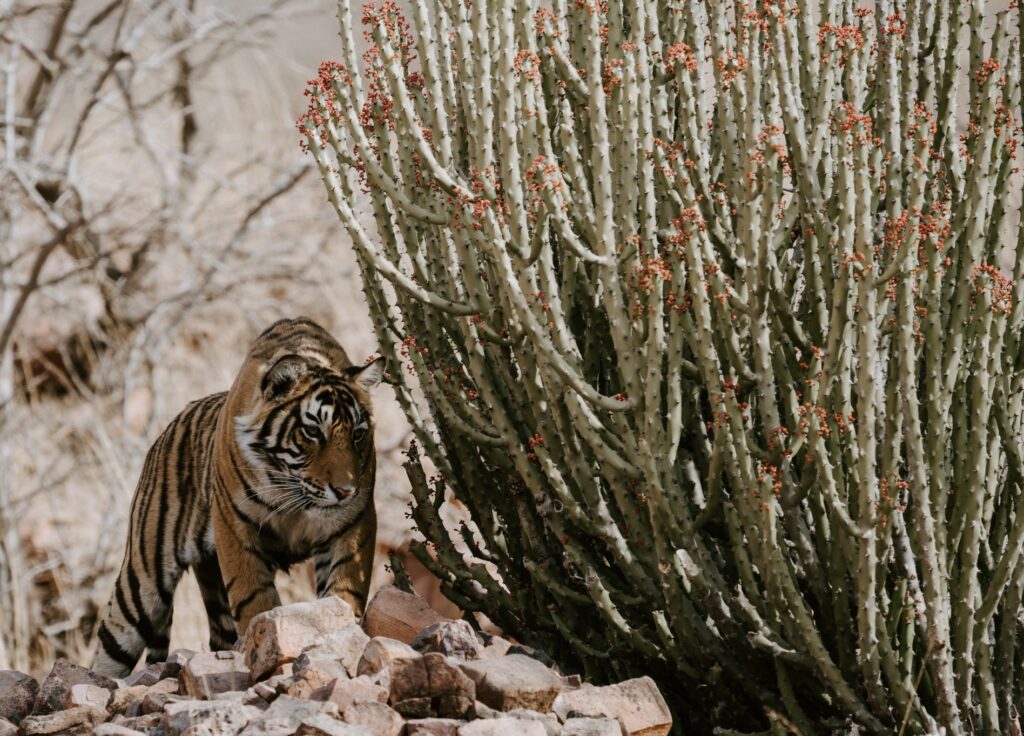This post first appeared as an email to our mailing list subscribers. To sign up for our mailing list, click HERE.
Playing with your food is good for the brain
When designing an enrichment program for a carnivore, one of the most important things you can do Is work to make their feedings as enriching as possible. In the wild many carnivores spend much of their day hunting and have many opportunities to hunt with extremely low success ratios. One of the most effective ways to make these feeds more enriching is through feeding of whole animals and carcasses. These help stimulate the natural hunting and feeding instincts of many carnivores with significantly greater effectiveness than ground meat or a more complete diet might.
However, whole food items and carcasses can only go so far, the real magic is when you look at how these items are being presented to the subject animal.
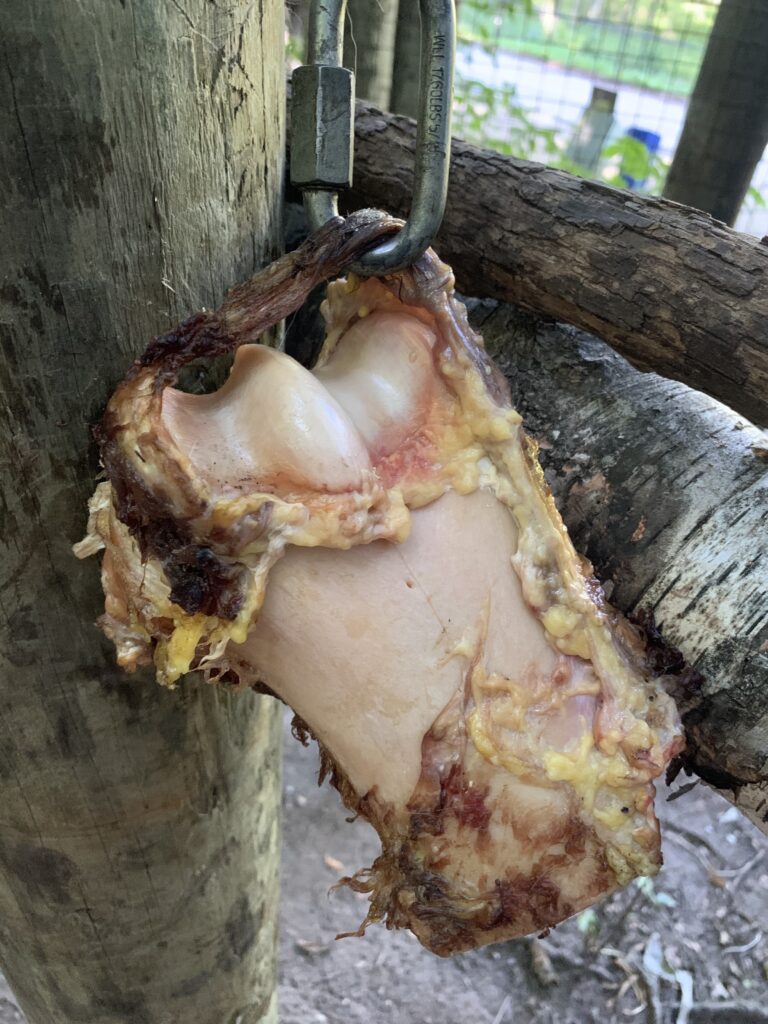
Presentation is everything
If most of the carnivores you work with are already getting enriching food items, you should ask yourself “Are these feeding opportunities as enriching as possible?”
Look at how you’re presenting the food items when you are feeding. Is the presentation making the animal work for their food (Check out our article on contrafreeloading if you want to learn more about this) or are they just walking over to it and eating it quickly?
In this email I am going to be going over some great techniques that you can use in order to make these feedings as enriching as possible for all the carnivores in your care.
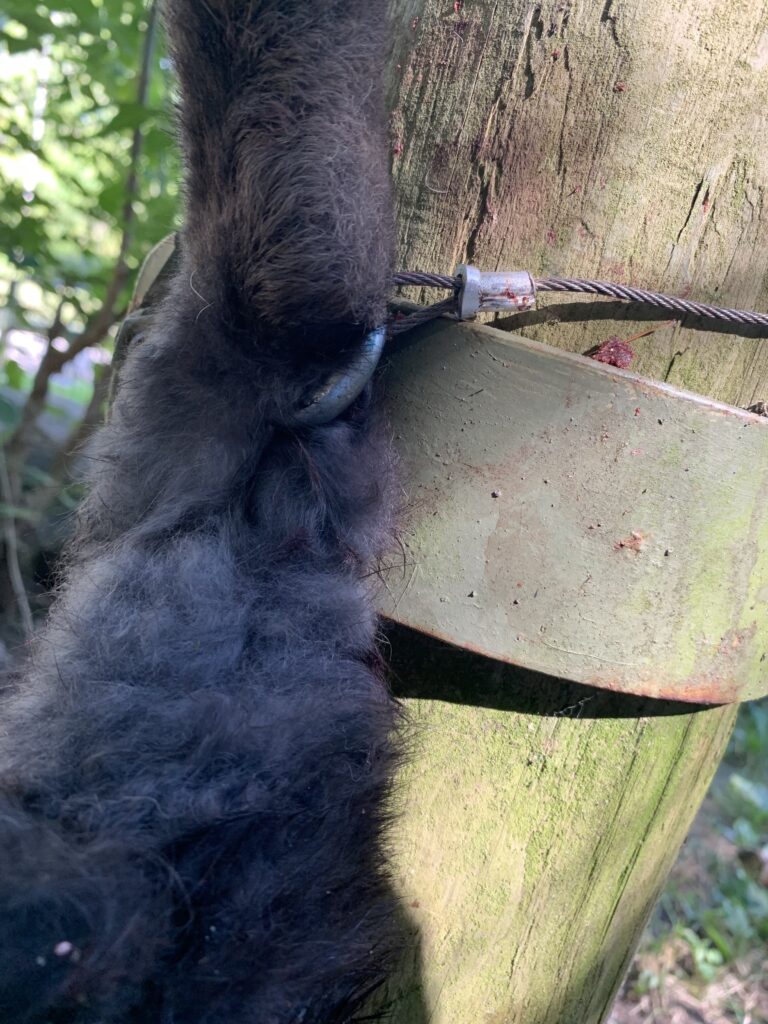
Jumping , Pulling and Chasing
As with all great enrichment techniques, your inspiration should come from the behaviours that your subjects’ wild counterparts are displaying in their day to day lives. How does this animal hunt in the wild? Is it jumping from tree to tree chasing birds? Is it ambushing prey and chasing them down? These are all things to think about when coming up with presentation ideas.
Tendons are your best friend
That sounds gross to say… but it’s true. Tendons are remarkably strong, for example the Achilles tendon on a human can endure more than 1000 lbs of force. Finding and securing food items via these tendons or other types of strong soft tissue can instantly turn the food item into an extremely enriching activity that will challenge the subject animal mentally and physically.
Below are some examples on how to secure these food items with a quick link or a carabiner to tendons of the food item.
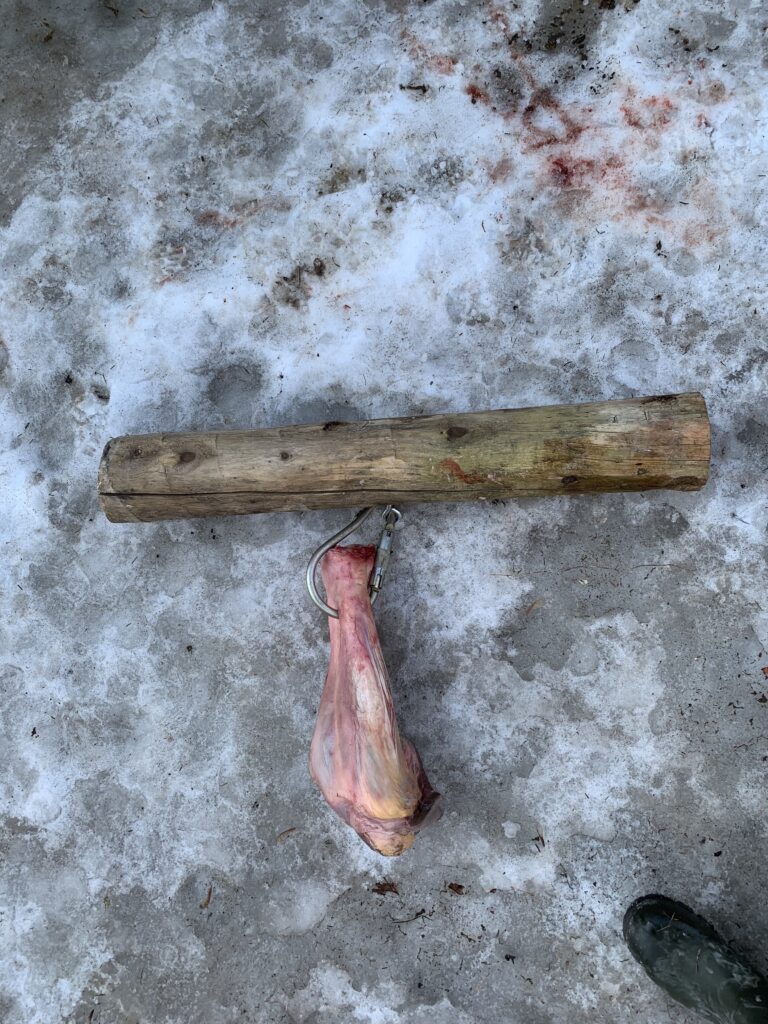
So Ive got this tendon.. what now?
So now that you are utilizing tendons as attachment points in the food items you are presenting, you can now look into ways to make the enrichment even more effective. One of my favourite ways to do this is by combining a zip line with the tendon attachment point.
If the animal you are feeding isn’t a great jumper, another alternative to a zip line is simply by securing the food item in the same manner, but to the base of a tree or post within the exhibit. This is a great way to easily stimulate a “tug of war” behaviour in the subject animal. You can also connect the food item to an object that moves, like a small log or toy.
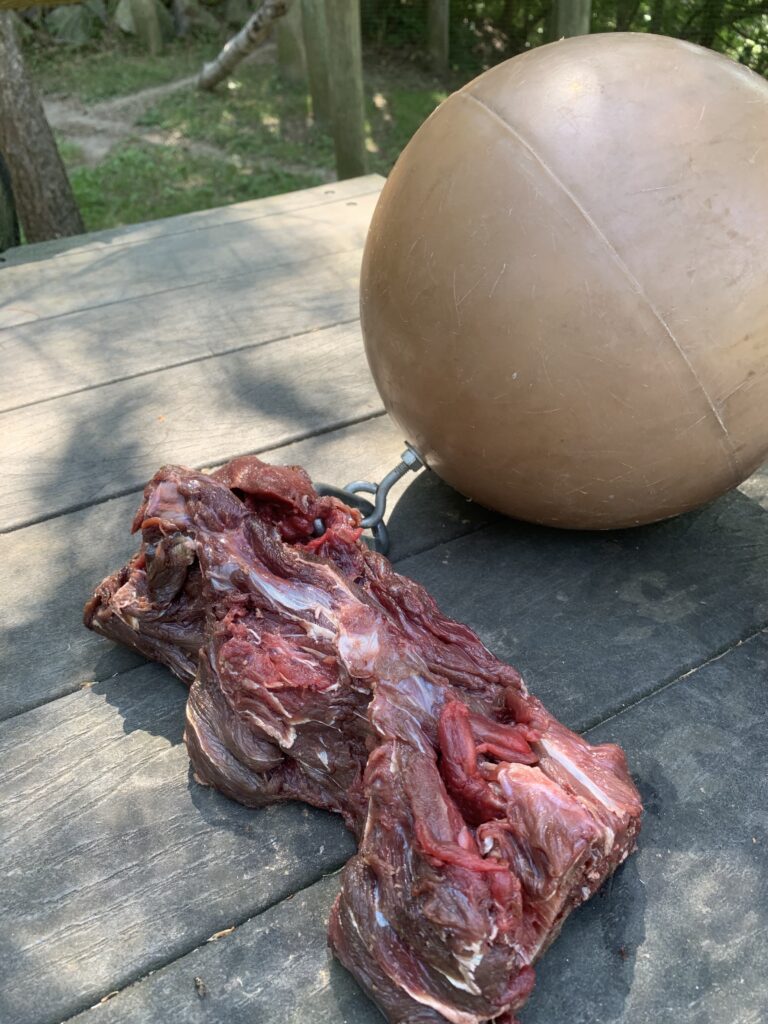
The main purpose of this short article is really to make people think about how they are presenting food items, and how they can easily make those presentation methods more enriching for the animals under their care. Based on the information presented in this article, its clear that you don’t always need a specific enrichment “device” in order to provide an animal with great enrichment.

